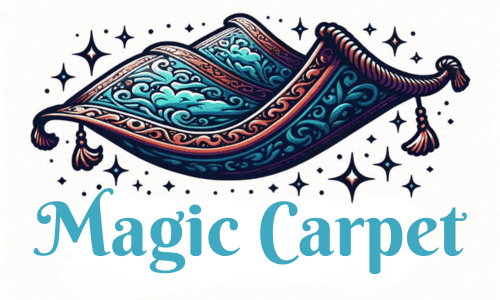When you are new to yoga, embarking on a yoga journey can be both exciting and intimidating. With many styles, each with its unique philosophy and series of movements, starting your first yoga class may feel a bit overwhelming.
A beginner’s guide to the varied styles of yoga can help you navigate the yoga world, understand the fundamental principles, and find the practice that resonates with your personal needs and preferences.

Yoga for beginners should focus on learning the basics—posture, breath, and movement flow. Some styles are more suited for those just beginning their yoga practice, offering a gentle introduction and the foundational techniques required for a safe and beneficial yoga experience.
Energetic and athletic forms of yoga, such as Ashtanga, might be challenging for first-timers, but they can be rewarding as your practice develops. Additionally, specialized classes using props or focusing on relaxation cater to specific needs and can enhance your overall experience.
Selecting the right class is crucial; it sets the tone of your entire yoga journey. You might want to try a few different classes to see which style suits you best.
The best yoga experience supports your wellness goals and fits your lifestyle. As you practice yoga, you will discover the benefits and learn to apply them to your daily life, cultivating a unique routine.
Key Takeaways
- A beginner’s guide helps navigate the various styles of yoga and their suitability for newcomers.
- Start with beginner-friendly yoga styles and advance to more energetic forms as you grow in your practice.
- Try different yoga classes to determine the best fit for your goals and lifestyle.
Exploring Yoga Fundamentals

Yoga offers diverse practices suitable for everyone, from beginners to advanced practitioners. In this section, you’ll gain clarity on the various styles of yoga and the key principles that form the foundation of this transformative physical and mental discipline.
Understanding the Styles of Yoga
When you begin your journey into yoga, you’ll encounter a variety of styles, each with its unique characteristics and benefits.
Hatha yoga is a broad term covering many of the physical practices of yoga, perfect for newbies who are just getting acquainted with the basics. It focuses on gentle movements and static poses to promote balance and flexibility.
On the other hand, Vinyasa yoga is more dynamic, linking breath with movement in a flowing sequence. If you prefer a more structured and physically demanding practice, Ashtanga yoga consists of six series of specific asanas that increase in difficulty. This style motivates regular practice, which can significantly improve your strength and stamina.
Yin yoga targets deep connective tissues, such as fascia, ligaments, and joints for those seeking a more meditative and rejuvenating approach. Poses in Yin yoga are held for longer periods, usually three to five minutes, encouraging a deeper level of physical and emotional release.
Key Yoga Principles
Yoga practice is anchored in several key principles that support your overall well-being. The physical practice, often referred to as asana, is just one aspect of yoga.
As you explore different types, remember that the breath, or Pranayama, is essential—it helps to control the energy flow within your body, promoting a sense of calmness and focus.
Each pose, or asana, strengthens and stretches your body while the breathing techniques teach you to navigate stress and restlessness. Balance, another fundamental principle, is not just a physical attribute to be mastered in poses like Tree Pose (Vrikshasana) but also a metaphor for harmonizing the body and mind.
Different Types of Yoga Styles for Beginners
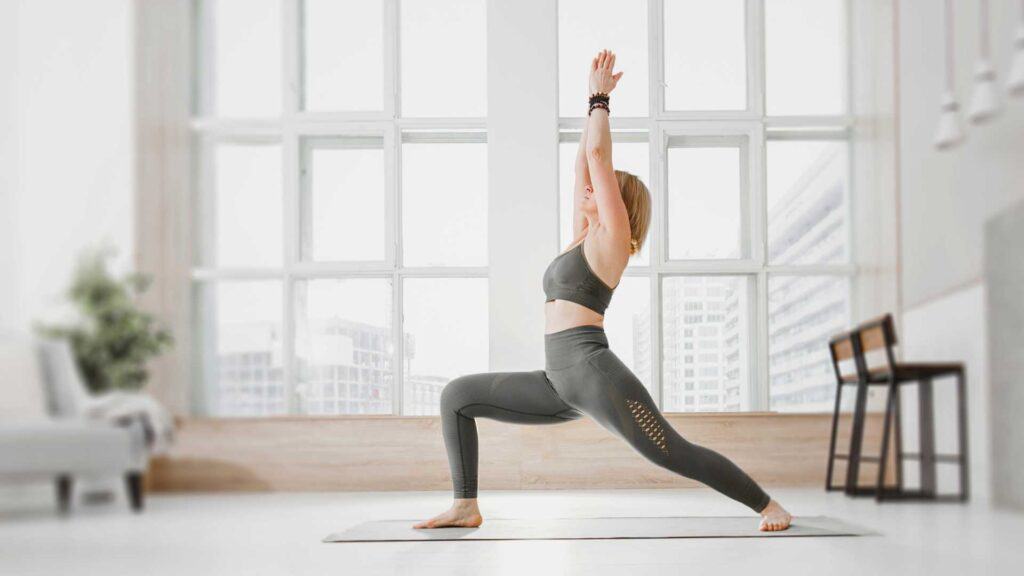
Exploring different forms of yoga can be exciting for a beginner. Two accessible styles that may be best for beginners who focus on the fundamentals of yoga postures and alignment are Hatha Yoga and Iyengar Yoga.
Hatha Yoga
Hatha Yoga is an excellent starting point for your yoga journey. It is a slow-paced style that encompasses basic yoga poses for newbies. This style prioritizes mastering posture and breath control.
You will learn to hold poses for several breaths, cultivating strength and flexibility. Hatha Yoga provides a solid foundation for all yoga practices and introduces the benefits of yoga, such as improved stress management and enhanced body awareness.
Iyengar Yoga
Iyengar Yoga, named after B.K.S. Iyengar, emphasizes precision and alignment. As a novice, this style focuses on each posture’s anatomical details.
Iyengar instructors often use yoga blocks, straps, and blankets to maintain proper alignment. These tools enable students of all levels to perform the postures safely, making it one of the best for novices.
This meticulous approach to yoga helps improve posture, balance, and muscle tone over time.
Energetic and Athletic Yoga Classes
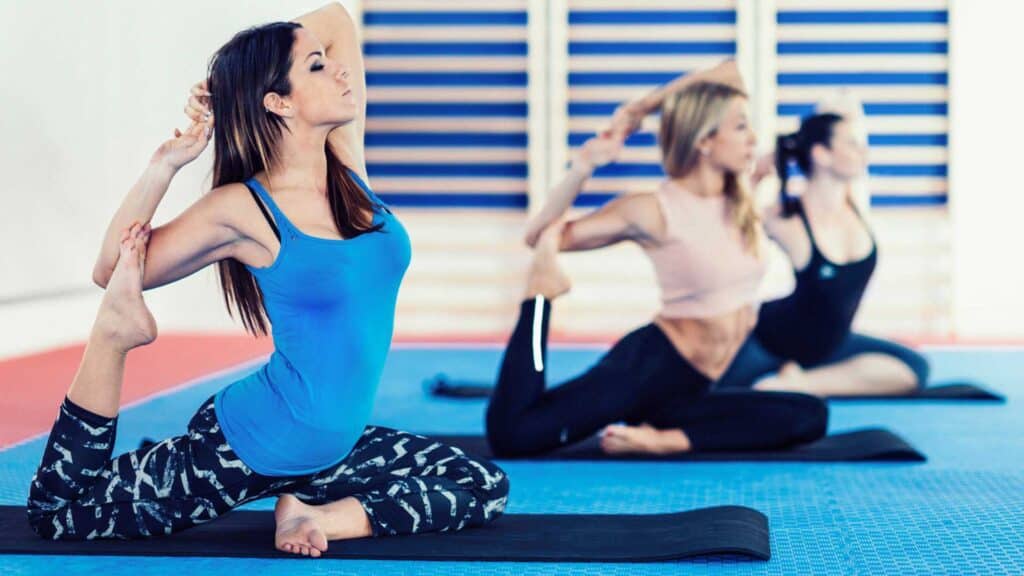
Consider trying one of the more dynamic styles when looking for a yoga practice that complements your high-energy lifestyle and supports your athletic goals. These forms emphasize strength, flexibility, and stamina, perfect for those who enjoy more physical practice.
Vinyasa Yoga
Vinyasa Yoga, often flow yoga, is about fluidity and movement synchronized with breath. You’ll move continuously through a series of postures that can vary from class to class, offering variety and creativity in each session.
This athletic yoga style emphasizes graceful transitions from one posture to another and is ideal for those who find stillness challenging.
Ashtanga Yoga
From an ancient practice, Ashtanga Yoga follows a set sequence of breath-related postures. It’s a rigorous and structured physical practice of yoga that demands focus and discipline.
Ashtanga begins with Sun Salutation A and Sun Salutation B sequences, progressing through a specific set of standing and floor postures.
Power Yoga
Derived from Ashtanga Yoga, Power Yoga is a vigorous, fitness-based approach. It combines the physical practice of yoga with the core-strengthening and flexibility benefits of Pilates.
Power Yoga does not follow a set sequence, allowing for various asanas that can be tailored to individual needs, making each class both challenging and unique.
Specialized Yoga Practices
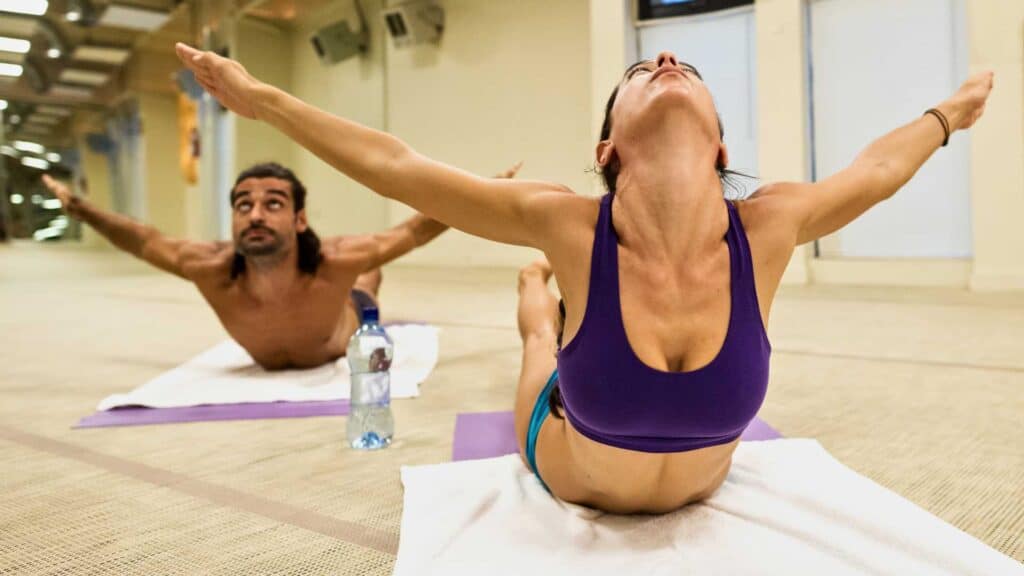
When you start your yoga journey, you’ll find various specialized yoga practices tailored to meet different wellness goals. Each style has unique poses, environment, and focus sequences, allowing you to choose your needs.
Restorative Yoga
In Restorative Yoga, relaxation is the focus. Classes typically involve a limited number of postures, each held for a longer duration with the support of props like blankets and bolsters.
The aim is to calm the nervous system and release deeply held tensions.
Hot Yoga
As the name suggests, Hot Yoga classes are conducted in a heated room to encourage sweating and increased flexibility.
These sessions can encompass various yoga styles, but the heat remains constant, enhancing your practice through deeper stretches and detoxification.
Bikram Yoga
Bikram Yoga is a form of Hot Yoga that consists of a fixed sequence of 26 poses and two breathing exercises in a room heated to 105°F with 40% humidity.
This 90-minute practice is designed to systematically work every part of your body, ensuring a balanced and challenging workout.
Yin Yoga
Yin Yoga invites you to slow down and settle into poses for extended periods, often up to five minutes.
This patience-testing practice lets you access the deeper connective tissues and cultivate a meditative state, promoting flexibility and a sense of inner peace.
Kundalini Yoga
Kundalini Yoga is distinct for its combination of movement, dynamic breathing techniques, meditation, and mantra chanting.
The purpose is to unlock the Kundalini energy at the base of the spine, enhancing self-awareness and spiritual enlightenment.
Choosing The Right Yoga Class
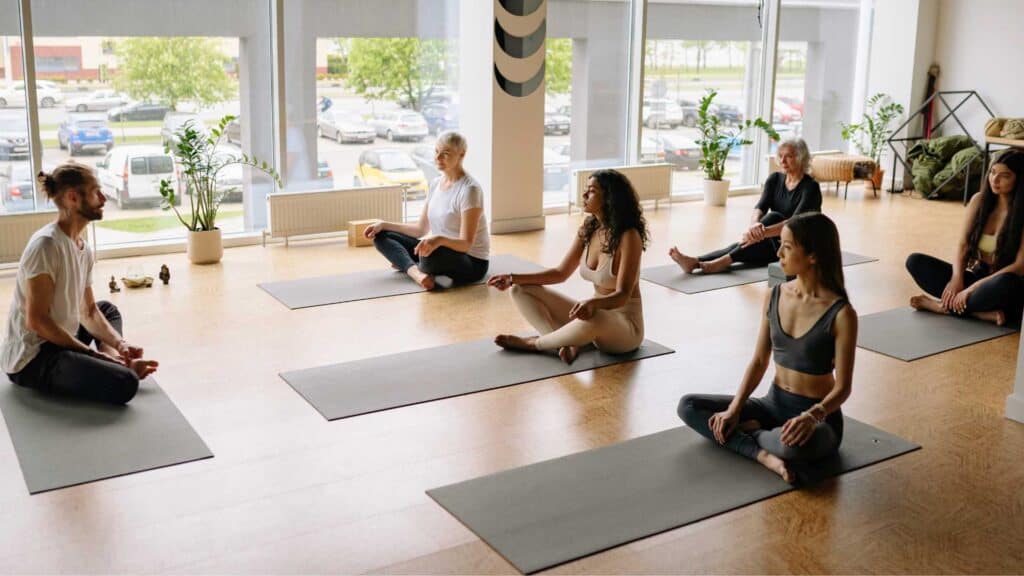
Embarking on your yoga journey can be thrilling, and finding the perfect class is crucial for fostering a long-lasting practice. As a beginner, it is important to select a yoga class that aligns with your physical capabilities, goals, and interests.
Consider your goals: Are you looking to enhance flexibility, or perhaps you’re more interested in yoga as a form of meditation and relaxation? Matching your intentions with the class type is key. Yoga and meditation often go hand-in-hand, and classes like Hatha Yoga are gentle and can be a good starting point to ease into both practices.
Look for beginner-friendly classes: A beginner class will move slower, allowing you time to learn and understand the forms. Yin Yoga is a great option if you’re aiming to improve flexibility and mindfulness through stillness.
Explore different styles: There are various forms of yoga. Iyengar is focused on alignment and uses props, making it easier to achieve the correct posture. Conversely, Vinyasa is more dynamic and may involve a series of poses strung together in a flow.
Visit various studios: Yoga studios often embody the essence of the styles and teachers they offer. Attending classes at different locations can directly experience various teaching styles, helping you find the right fit.
Research teachers: A knowledgeable yoga teacher who resonates with you is invaluable. They guide you safely into postures, correct your alignment, and ensure you get the most out of your practice. Don’t hesitate to ask about a teacher’s experience and expertise.
Essential Yoga Equipment

When embarking on your yoga journey, a few key items will support your practice and help enhance your experience. Here’s what you need to know about essential yoga equipment:
Yoga Mat: Your yoga mat is foundational. It provides a non-slip surface, which is crucial for safety and stability in all styles of yoga, including Hot Yoga and Anusara Yoga. A good mat also cushions your body, protects your joints, and defines your personal space in class.
Yoga Blocks: These are great for beginners. They assist you in maintaining balance, perfect alignment, and deepening stretches. Blocks can be particularly helpful in poses that seem just out of reach or during Anusara yoga, where alignment is a focus.
Yoga Strap: Your yoga strap can become your best friend, especially as you gain flexibility. Use it to bridge gaps between your hands and feet in various poses without straining.
Table: Consider Your Practice Needs
| Yoga Style | Recommended Equipment |
|---|---|
| Hot | Non-slip towel (for sweat), water bottle |
| General Hatha | Blocks, Strap |
| Anusara | Blocks for alignment, Strap for form |
Remember, props like yoga blocks and straps are not signs of weakness; they’re tools for improvement. They serve to assist your body as you grow in your practice. As your skills improve, you’ll find new ways to use these tools, furthering your practice and enjoyment of yoga.
Diverse Yoga Experiences
Exploring different types of yoga can offer you a range of health and relaxation benefits. Whether you’re seeking a spiritual connection akin to ancient practices or looking for a modern workout to enhance your fitness, there’s a yoga style that aligns with your needs.
Modern vs. Traditional Yoga
Traditional yoga is deeply rooted in ancient Indian philosophy. It focuses on a blend of spiritual and physical practices. Classic styles like Hatha, which emphasize slow movements and breathing techniques, have been practiced for centuries to bring balance to life.
In contrast, modern yoga has evolved to meet contemporary fitness trends. Styles such as Power Yoga or Vinyasa flow incorporate a faster pace and more challenging poses, making them a fit for those looking to combine strength and flexibility in their workout.
| Yoga Style | Key Focus |
|---|---|
| Hatha | Balance and breathing |
| Power Yoga | Strength and flexibility |
Yoga for Health and Relaxation
Yoga is renowned for its health benefits, including stress reduction and improved cardiovascular health. Restorative yoga, a gentle form suitable for beginners, can lead you to deep relaxation while enhancing your flexibility.
Breath control, or pranayama, is essential in any style and beneficial for your mental well-being. Regular yoga may enhance your breathing techniques, granting you a sense of calmness and improved focus in your daily life.
Cultivating a Yoga Routine
When you’re new to yoga, establishing a routine might feel daunting, but it’s all about finding a rhythm that works for you.
Regular yoga practice can enhance your flexibility, strength, balance, and inner peace.
Aim for shorter, more frequent yoga sessions—about 20-45 minutes—spread across the week. This can lead to better results than occasional longer sessions.
Join a Yoga Class
If this is your first yoga experience, attending a beginner’s yoga class can be incredibly beneficial.
You’ll be guided through a series of poses, gaining an understanding of yoga and meditation in a structured, supportive environment.
It also offers the chance to connect with a community, which can greatly encourage your new journey.
As you explore different types of yoga, remember that everyone has a style.
Yin yoga is excellent for deep tissue work and relaxation, while more popular yoga types like Iyengar or Ashtanga focus on alignment and movement, respectively.
If consistency is key, you might enjoy the structure of Bikram yoga, known for its series of 26 poses practiced in a heated room.
To cultivate your regular yoga routine, consider the following aspects:
- Personal Goals: Are you seeking relaxation, flexibility, or strength building?
- Schedule: Identify the most realistic times you can practice yoga.
- Variety: Mix in different types of yoga classes to keep your routine fresh.
- Home Practice: Use online resources to complement your yoga class experiences.
